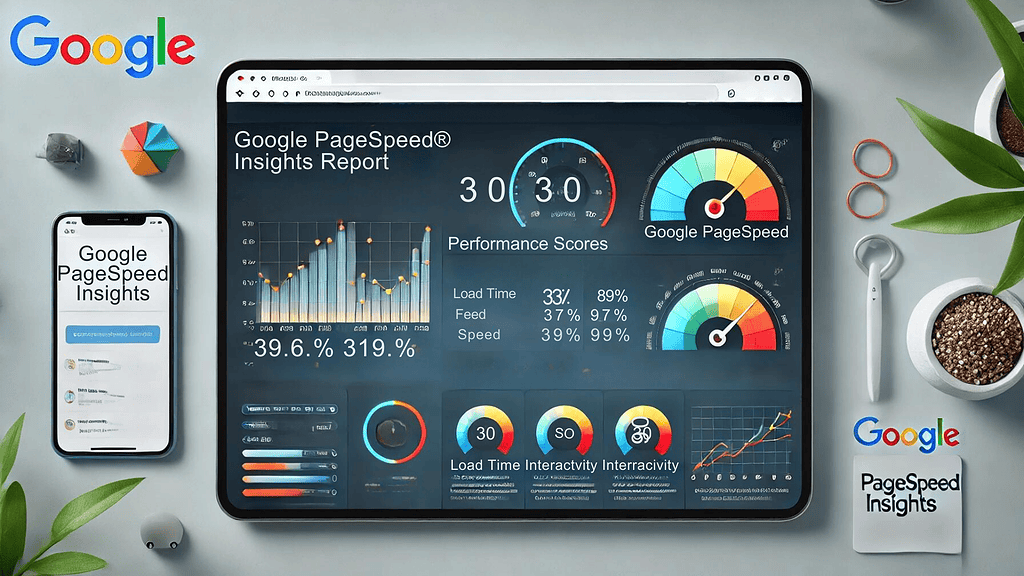Creating Mobile-Optimized Sites For SEO: Essential Practices
Reading time: 7 minutes
In today’s digital landscape, creating mobile-optimized sites is no longer an option—it’s a necessity. The majority of users now access the internet via mobile devices, and search engines like Google prioritize mobile-friendly websites in their rankings. As a small business owner or marketer, understanding the SEO potential of mobile optimization can significantly impact your site’s visibility and success. This comprehensive guide will outline the essential practices to ensure your site is optimized for mobile, enhancing both user experience and search engine optimization (SEO).
Why Mobile Optimization is Critical for SEO
Mobile devices have become the primary means of accessing the internet, and search engines, particularly Google, have adapted their algorithms to prioritize mobile-friendly websites. A mobile-optimized site not only enhances the user experience but also reduces bounce rates and boosts engagement—all factors contributing to SEO ranking. The best small business websites are those that seamlessly integrate mobile optimization into their overall SEO strategy, maximizing their SEO potential.
In addition, the shift to mobile-first indexing by Google means that the mobile version of your site is treated as the primary version for ranking and indexing. For small businesses aiming to enhance their digital footprint, creating mobile-optimized sites and ensuring that the mobile experience is optimized will help achieve better rankings. By investing in SEO services for small business, companies can ensure that their mobile site performs optimally, which directly influences their overall SEO management.

Understanding Mobile-First Indexing
Google’s mobile-first indexing has transformed how websites are ranked. This shift emphasizes that the mobile version of a website is the primary factor in determining rankings. Sites that are not mobile-friendly risk losing visibility, particularly as more users continue to access websites via smartphones and tablets. For small businesses, this highlights the importance of SEO services for small business that cater specifically to mobile optimization.
By utilizing tools like SE Ranking, businesses can monitor how their mobile and desktop versions perform. SE Ranking offers insights into mobile-specific metrics, allowing you to identify and address any weaknesses. These improvements will contribute to better SEO ranking and user experience across all devices.
Responsive Design: The Foundation of Mobile Optimization
A responsive website design is the cornerstone of mobile optimization. Responsive design enhances user experience, consolidates content, and boosts SEO by offering consistency across devices.

Improving Load Times for Mobile Performance
Mobile users expect quick load times. Slow-loading pages can lead to increased bounce rates and lower rankings. Optimizing your site’s load time is critical for retaining visitors and improving your SEO ranking. Several strategies can help speed up your site:
- Optimize Images: Compress and resize images to reduce load times without compromising quality.
- Minify Code: Reduce the size of HTML, CSS, and JavaScript files to improve loading speeds.
- Leverage Browser Caching: Store certain elements locally in the user’s browser to reduce loading times on subsequent visits.
Google’s PageSpeed Insights offers recommendations to improve mobile performance, meeting users’ expectations effectively. Additionally, SE Ranking provides insights into how your mobile site performs against competitors, offering benchmarks for areas of improvement.

Simplifying Navigation for Mobile Users
Mobile websites often face challenges related to navigation. Simplified, intuitive navigation is key to improving the user experience on mobile devices. Some best practices include:
- Use a Hamburger Menu: A hamburger menu is a popular design choice for mobile sites as it saves space and reduces clutter.
- Optimize Clickable Elements: Ensure buttons and links are appropriately sized and spaced for touch navigation, reducing the risk of misclicks.
- Prioritize Essential Content: Focus on the most important content by limiting menu items and keeping the layout user-friendly.
Good navigation not only improves the user experience but also contributes to better SEO management. Effective navigation is crucial for small business SEO, impacting user interaction, time on site, and bounce rate. Creating mobile-optimized sites and improving these metrics can lead to better SEO ranking.

Leveraging Local SEO for Mobile Traffic
Local searches account for a significant portion of mobile traffic, making local SEO crucial for small businesses. To capitalize on this traffic, consider the following local SEO strategies:
- Include Location in Metadata: Use your city, region, or zip code in key metadata areas such as title tags, meta descriptions, and headers.
- Incorporate Local Keywords: Integrate location-specific keywords naturally throughout your content to increase relevance in local searches.
- Optimize Google My Business: Ensure your business is listed and up-to-date on Google My Business to improve your local visibility.
These steps can help improve your SEO ranking and attract more local customers, which is a vital part of SEO services for small business.
Avoiding Flash and Embracing Modern Technologies
Flash is an outdated technology that’s not supported by most mobile devices and can harm your website’s SEO performance. Replacing Flash with modern alternatives like HTML5 can significantly improve both user experience and SEO. HTML5 is mobile-friendly and allows for the creation of interactive content without negatively impacting SEO potential.
Ensuring Content Accessibility for Mobile Users
Mobile optimization goes beyond design and speed—it’s about making sure your content is accessible to all users. Here are some key tips to enhance mobile content accessibility:
- Use Large, Readable Fonts: Ensure that text is legible on small screens without requiring users to zoom in.
- Avoid Text in Images: Text embedded in images cannot be crawled by search engines, so keep important information in plain text.
- Implement Alt Text for Images: Alt text not only makes your site more accessible to visually impaired users but also boosts SEO potential by helping search engines understand your image content.
By focusing on accessibility, you can improve both user experience and your site’s SEO ranking. Content accessibility is a crucial component of SEO management, contributing to better search engine visibility.
Regularly Testing Your Mobile Site
Regularly test your mobile site to ensure optimal performance for users and search engines. Google’s Mobile-Friendly Test is an excellent tool for identifying any issues with your mobile site. Regular testing and updates ensure your site remains optimized for mobile users, contributing to better SEO ranking.

SE Ranking: A Valuable Tool for SEO Management
Using tools like SE Ranking can provide critical insights into your mobile site’s performance. SE Ranking allows you to track your site’s performance across mobile and desktop platforms, helping you make informed decisions about your SEO strategy. This tool is invaluable for small businesses looking to maximize their SEO potential by providing comprehensive data on keyword rankings, site audits, and traffic analysis.

Final Thoughts: Embracing Mobile Optimization for SEO Success
Mobile optimization is a fundamental component of any successful SEO strategy. Focus on responsive design, faster load times, local SEO, and accessible content for better visibility.
For small businesses, the SEO potential of a mobile-optimized site cannot be overstated. By implementing these essential practices and utilizing SEO services for small businesses, you’ll be better positioned to achieve higher SEO ranking and attract more traffic. Using tools like SE Ranking to monitor your site’s performance will ensure your business stays ahead in a competitive digital environment.
In summary, mobile optimization is no longer an optional strategy—it’s crucial for the success of your business’s online presence. Therefore, by implementing these practices, you can build a website that delivers an excellent user experience while also meeting search engine requirements, which will ultimately boost growth and visibility for your small business. Unlock the power of online visibility with Owltek Solutions! Explore our cutting-edge strategies in search engine optimization and elevate your digital presence today.
**This post contains affiliate links, meaning I may earn a small commission if you make a purchase through one of them. Rest assured, I only recommend products I truly love. Your support helps keep my creative business thriving — thank you!**

